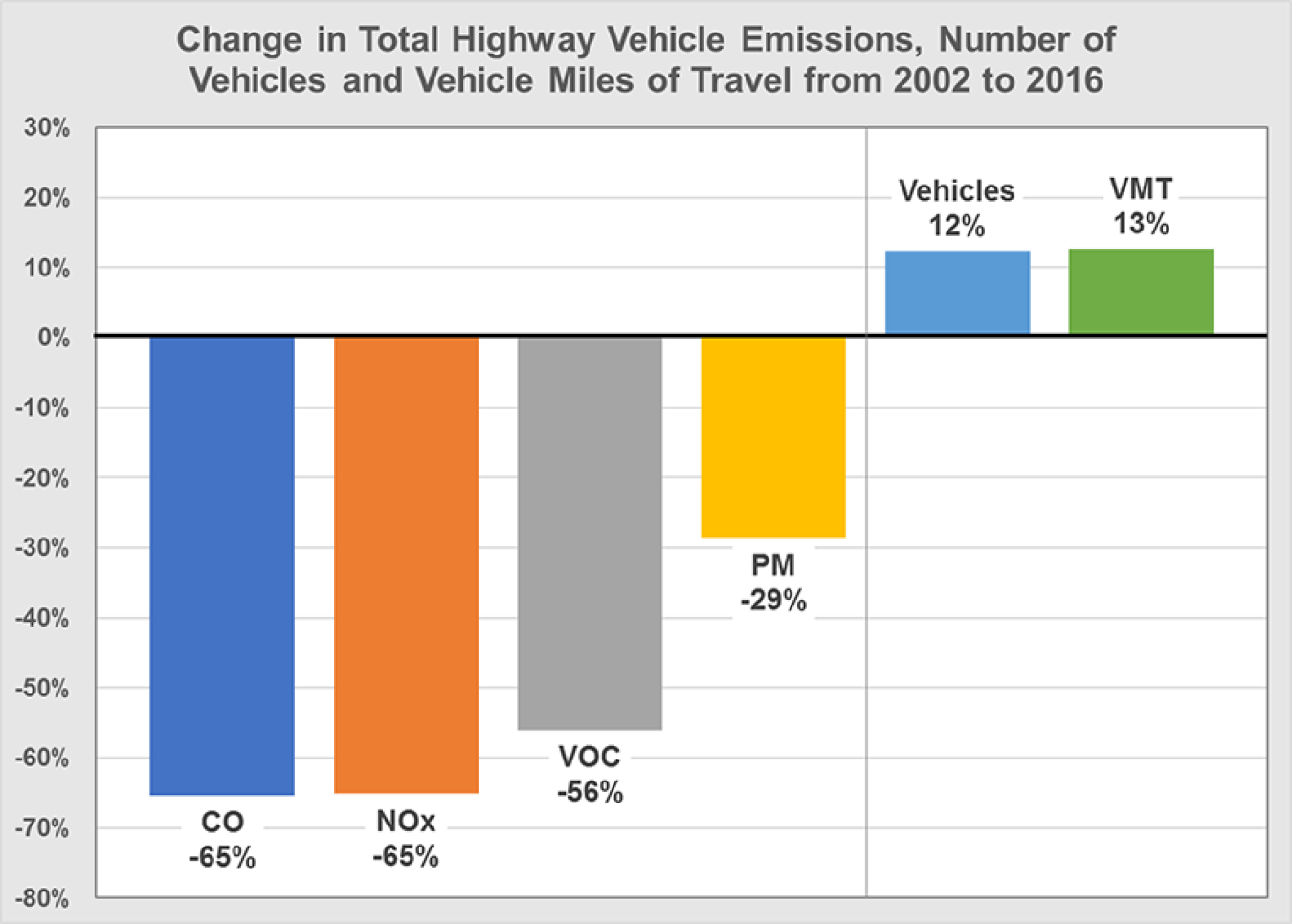Improvements in fuels and vehicle technologies have caused a decline in the total amount of airborne pollutants emitted from highway vehicles.
October 16, 2017SUBSCRIBE to the Fact of the Week
Due to improvements in fuels and vehicle technologies, the total amount of airborne pollutants emitted from highway vehicles has declined considerably. Since 2002 highway emissions declined for carbon monoxide (CO), nitrogen oxides (NOx), volatile organic compounds (VOC), and particulate matter (PM) despite increases in the number of highway vehicles and vehicle miles of travel (VMT).
Change in Total Highway Vehicle Emissions, Number of Vehicles, and Vehicle Miles of Travel from 2002 to 2016

Notes: Change in number of vehicles is from 2002 to 2015 because the 2016 data are not available. Particulate matter emissions include both fine particle matter less than 10 microns (PM-10) and fine particle matter less than 2.5 microns (PM-2.5). The Environmental Protection Agency updated methodologies for transportation emissions in 2002, so data are not directly comparable to earlier years.
Sources: U.S. Environmental Protection Agency, National Emissions Inventory and Air Pollutant Emissions Trends Data.
U.S. Department of Transportation, Federal Highway Administration, Traffic Volume Trends, December 2016, Highway Statistics 2002 and Highway Statistics 2015.

